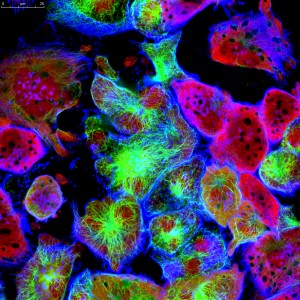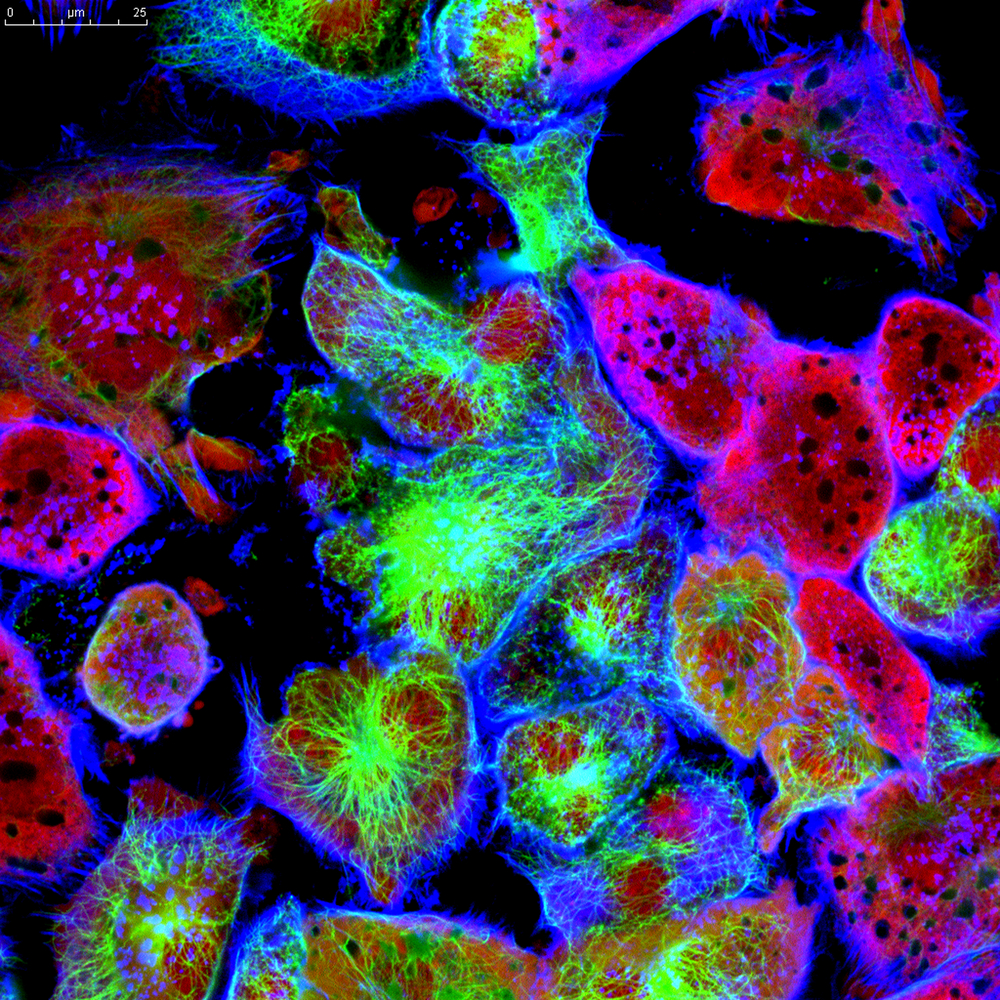 Researchers from Virginia Commonwealth University Massey Cancer Center, VCU Institute of Molecular Medicine and Johns Hopkins Medical Institutions established a non-invasive method for detecting prostate cancer both localized or spread and metastasized to soft tissues and bone, using preclinical animal models of metastatic prostate cancer. This study is a proof-of-principle of this imaging method that, in the near future, may enable imaging and detection in a non-invasive way and in real-time — not only for prostate cancer, but for a wide variety of other cancers as well.
Researchers from Virginia Commonwealth University Massey Cancer Center, VCU Institute of Molecular Medicine and Johns Hopkins Medical Institutions established a non-invasive method for detecting prostate cancer both localized or spread and metastasized to soft tissues and bone, using preclinical animal models of metastatic prostate cancer. This study is a proof-of-principle of this imaging method that, in the near future, may enable imaging and detection in a non-invasive way and in real-time — not only for prostate cancer, but for a wide variety of other cancers as well.
This study, entitled “AEG-1 promoter-mediated imaging of prostate cancer,“ was published on the Online First edition of the journal Cancer Research, a journal of the American Association for Cancer Research, by first author Dr. Akrita Bhatnagar from Dr. Martin G. Pomper’s laboratory, in a joint collaboration with Dr. Paul B. Fisher, both co-seniors authors of the study, and colleagues.
This pioneer study is a systemically administered, non-invasive, molecular-genetic technique developed in animal models to image bone metastases due to prostate cancer. This novel technique is based on the detection of a gene known as AEG-1, confirmed recently as an oncogene, implicated in cancer development and progression, and expressed in most types of tumors but not normal cells.
This method enables the acquisition of bone metastases images in in vivo models, with higher precision than any other imaging technique used in the clinic.
“Currently, we do not have a sensitive and specific non-invasive technique to detect bone metastases, so we are very encouraged by the results of this study” said Dr. Fisher, Thelma Newmeyer Corman Endowed Chair in Cancer Research and co-leader of the Cancer Molecular Genetics research program at VCU Massey Cancer Center, chairman of the Department of Human and Molecular Genetics at the VCU School of Medicine and director of the VCU Institute of Molecular Medicine. “Additionally, because AEG-1 is expressed in the majority of cancers, this research could potentially lead to earlier detection and treatment of metastases originating from a variety of cancer types,” Dr. Fisher said in a VCU press release.
The researchers used a promoter called AEG-Prom to detect the expression of the AEG gene in real time, overcoming the difficulties associated to this type of imaging. A promoter is a DNA region that initiates transcription of a particular gene, in this case, the AEG gene. They made a combination between AEG-Prom with an imaging agent expressing firefly luciferase, a bioluminescent substance that makes fireflies glow, and the herpes simplex virus type-1 thymidine kinase (HSV1-tk) gene, used as a reporter gene that is expressed when specific radioactive compounds are delivered. The combination of AEG-Prom with HSV1-tk was inserted into very small drug delivery nanoparticles, which were then intravenously injected. When the AEG-Prom is exposed to specific proteins, like c-MYC that is highly expressed in tumor cells, it activates the expression of the luciferase gene, enabling the detection of tumor cells by sensitive imaging devices.
“The imaging agents and nanoparticle used in this study have already been tested in unrelated clinical trials. Moving this concept into the clinic to image metastasis in patients is the next logical step in the evolution of this research,” co-senior author Martin G. Pomper, M.D., Ph.D., William R. Brody Professor of Radiology at Johns Hopkins Medical Institutions added in the press release.”My colleagues and I are working toward this goal, and we look forward to opening a study to deploy this technology as soon as possible,” concluded Dr. Pomper.
Dr. Fisher and Dr. Pomper’s group is the first exploring the use of cancer-specific and cancer-selective gene promoters to image tumors, while also studying their potential use as therapeutic delivery agents in real-time.

